The first tool that helped knitters work in the round (that is, making tubes without having to sew them up) was the double pointed needle. Commonly abbreviated as DPN, the double pointed needle is designed in such a way that you can move stitches onto one end and then off the other without having to turn the needle.
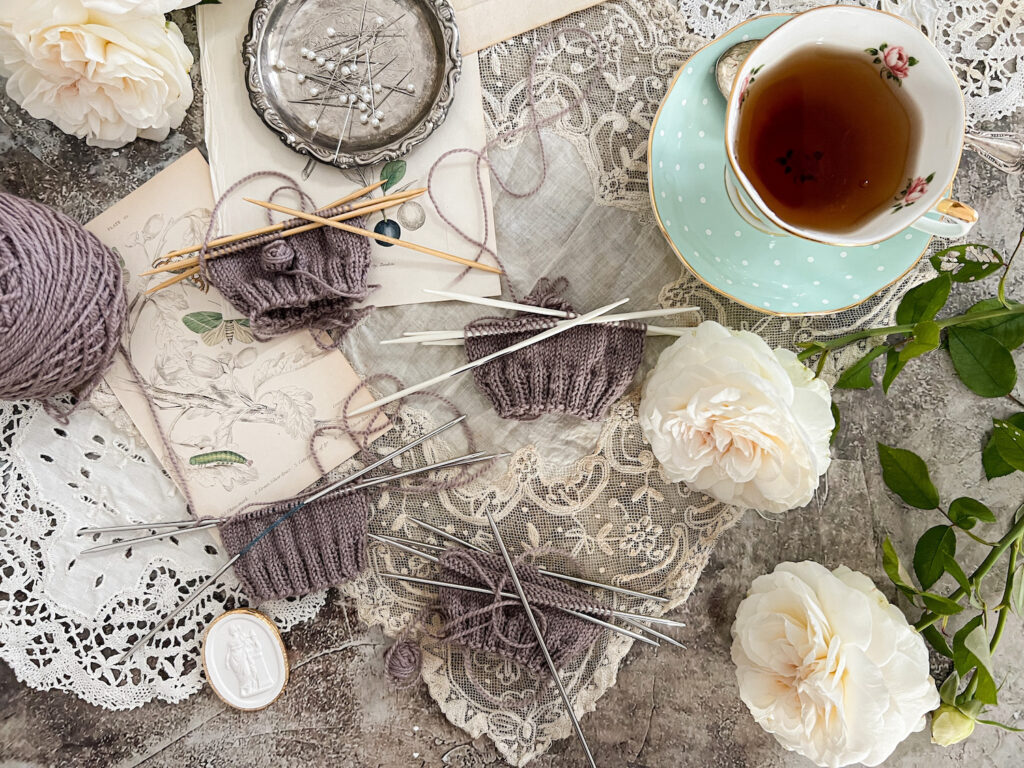
This is in contrast to the regular straight needles most of us learn on, where there is a bulb or stopper at one end of the needle and a point at the other. With these needles, you can only knit on one end, and the other end keeps your stitches from falling off.
Double pointed needles have been around for hundreds of years. In fact, one of my favorite paintings from the early Renaissance period shows the Virgin Mary knitting Christ’s seamless garment with double-pointed needles. It’s a beautiful example of how everyday life works its way into even our most elevated forms of expression.
In the intervening centuries, DPNs have undergone very few changes, but there are some distinctions between different varieties of double pointed needles. Nowadays, they’re made with different materials, different lengths, and different shapes. Curious? Let’s explore more.
This post contains affiliate links, which means if you choose to buy something through those links, I’ll receive a small commission at no extra cost to you. I will always identify affiliate links for you. Thanks for supporting my work!
An Important Note Before We Begin
Let’s address the elephant in the room right away: there is no single set of best double pointed needles for every knitter. I can’t just write you a blog post with three product links, tell you these are the right needles for you, and disappear.
One of the things I love most about knitting is that it’s so individualized. Some are tight knitters, and others are loose knitters. Some make only socks, while some are hardcore shawl knitters or sweater fans. There are knitters who will only use animal fibers, and there are knitters who refuse to or can’t use animal fibers.
All this beautiful diversity in craft, however, means that there is no single knitting tool that will be the best tool for every knitter. Finding the right tools is, in large part, a matter of personal preference. The tools an experienced knitter may choose aren’t necessarily the tools a beginner knitter would want to use, and so on.
With that in mind, let’s instead look at double pointed needles from the angle of figuring out which are the best set for different common circumstances.
Best Double Pointed Needles for Tight Knitters
If you’re a tight knitter like me, you’ve probably experienced the frustrations of bending and breaking needles. You might have also struggled with yarn that feels like it’s gripping your needles too tightly.
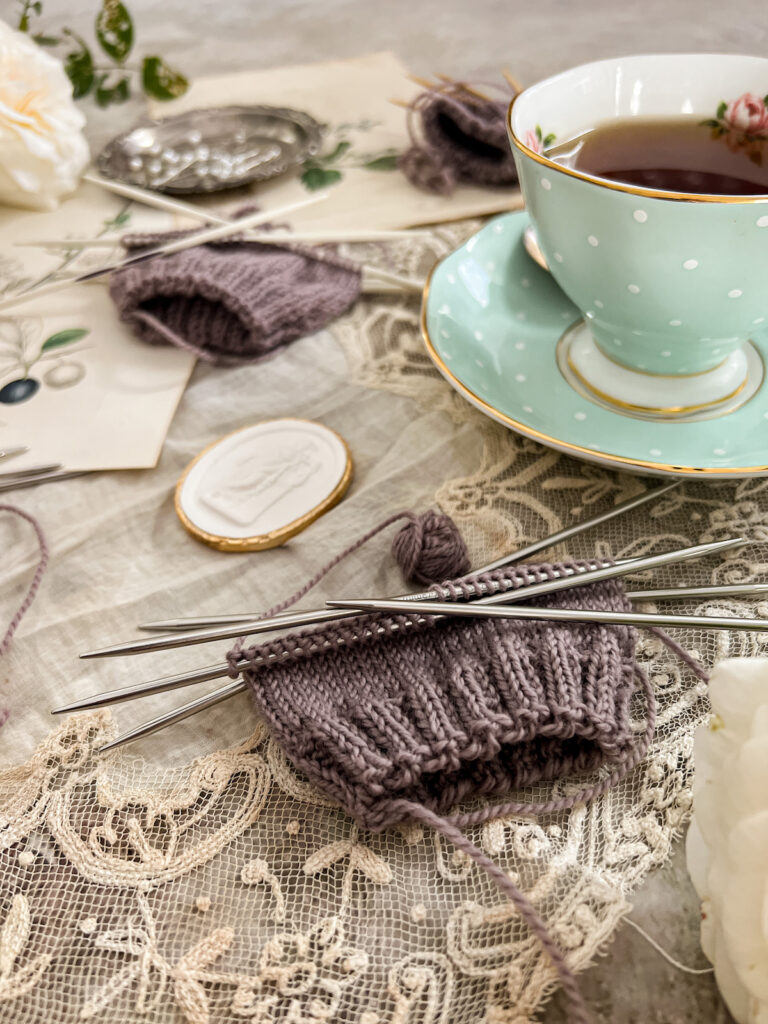
This is a common problem when using needles made of a rougher material, like wood or plastic. As a result, I moved to using metal double-pointed knitting needles about a decade ago. Their smooth surface makes it easier to glide the yarn along without friction.
Metal DPNs vary in smoothness. If you’re looking for really slick needles, look for metal needles that specify they’re extra smooth. Some, like the AddiSteel DPNs, will specifically mention that they are surface-coated for extra smoothness.
My first set of metal DPNs was the Knit Picks nickel-plated set (affiliate link). I’ve held onto them ever since, and they’ve been great workhorse needles. I have, however, managed to bend a few of them with the tightness of my knitting.
I’ve also added a set of ChiaoGoo DPNs (affiliate link) to the rotation. These metal needles are a little rougher than the KnitPicks nickel-plated needles, but they still provide a pretty smooth glide. I haven’t managed to bend them yet, but I also haven’t had them that long. Will report back in future!
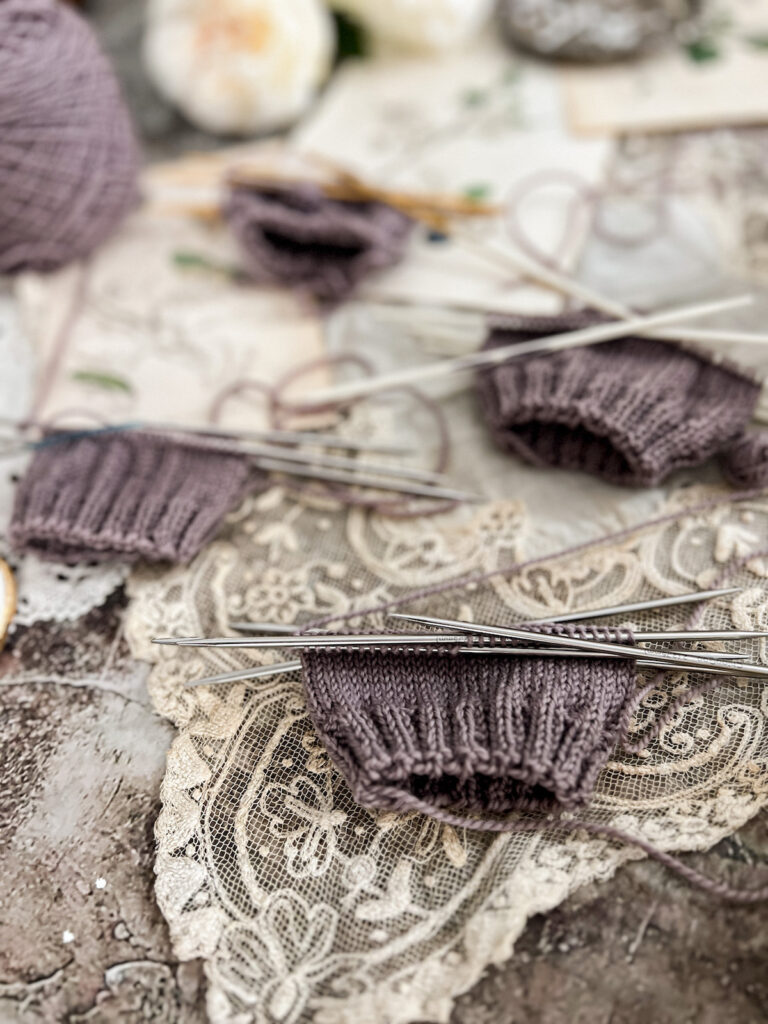
Characteristics to Look For in a Double Pointed Needle Set
If you’re a tight knitter, here’s a quick cheat sheet for what to look for in a set of double-pointed needles, along with some links to needles other tight knitters have recommended to me over the years.
Look for:
- Needles with a smooth finish, usually metal
- Needles with extra sharp points (easier to insert into tight stitches
Try:
- Knit Picks Nickel-Plated Needles (affiliate link)
- ChiaoGoo Double Pointed Needles (affiliate link)
- AddiSteel Knitting Needles
- HiyaHiya SHARP Needles
Best Double Pointed Needles for Loose Knitters and/or Slippery Yarn
If you’re a loose knitter or are working with slippery yarn (like silk), you’ll probably want needles with a little more grip. This will help prevent them from falling out of your work too often. Metal needles aren’t going to be a good choice for these situations.
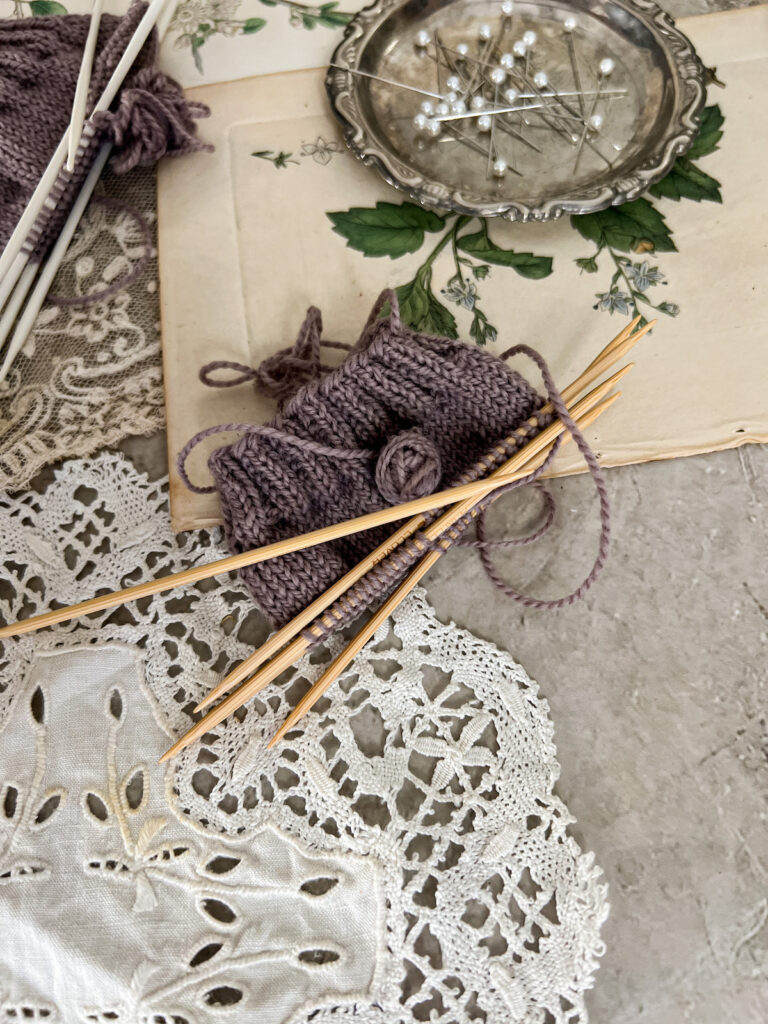
But wooden or bamboo needles are the perfect choice, and what’s even better, they’re easily available, lightweight, and comparatively inexpensive.
My favorite bamboo needles are, hands-down, the classic Takumi Clover needles (affiliate link). They’re the wooden needles I started with, and even after all these years, I feel a sense of comfort with them in my hands.
I bought a bamboo set of needles just for this blog post because, well, I had snapped most of mine over the years (see above re being a tight knitter). When I opened the package, I still felt the same little thrill of excitement. Casting on brought back a flood of memories. It turns out you never really get over the joy of new knitting needles.
If you’re just starting out using double-pointed needles, I think bamboo or wooden needles are usually the best option. That’s because DPNs can feel really fiddly while you’re getting used to them. It’s easy to drop your work while you’re casting on and knitting those first few rounds. The grippier surface of these needles will help keep them from falling out of your work as you learn.
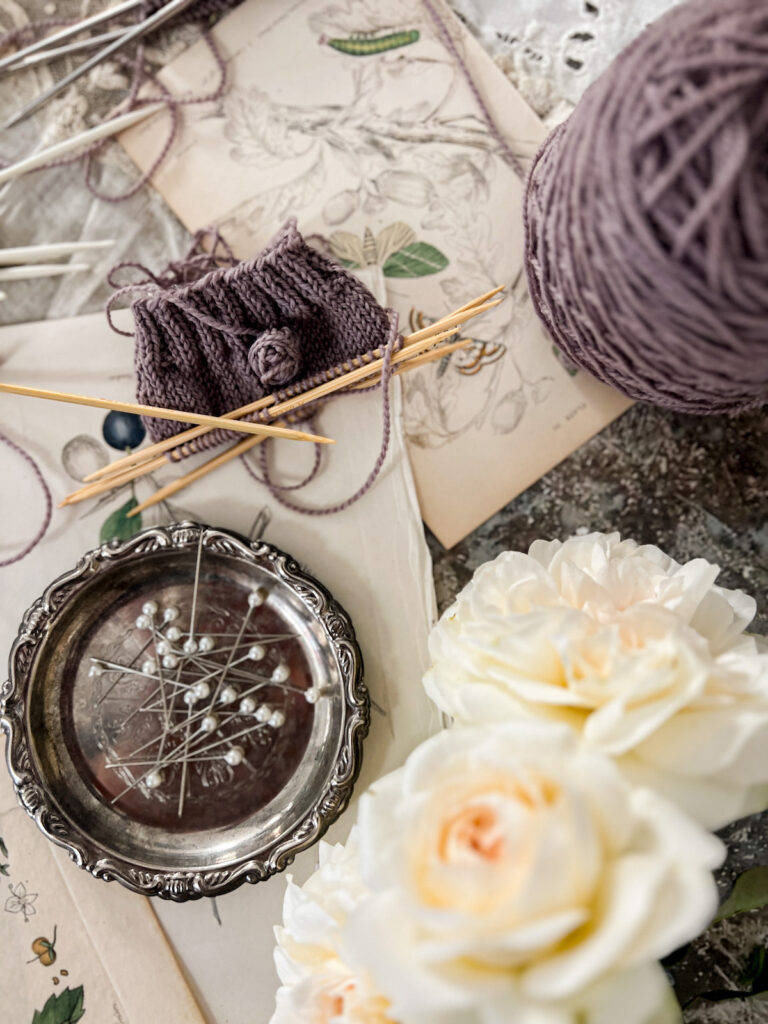
Characteristics to Look For in a Double Pointed Needle Set
If you’re a loose knitter or working with slippery yarn, here’s a quick cheat sheet for what to look for in a set of double-pointed needles, along with some links to needles that loose knitters have recommended to me over the years.
Look for:
- Needles with a rougher surface that will grip the yarn, usually wood or bamboo
- Needles that you can grip comfortably
Try:
- Takumi Clover needles (affiliate link)
- Brittany needles (I like the birch needles, but the black walnut is beautiful, too)
- Knit Picks Sunstruck needles (affiliate link)
- Lantern Moon needles
Best Double Pointed Needles for Hand Pain
Lots of knitters experience hand pain, either from repetitive motion or arthritis. Companies that manufacture knitting needles have responded by making ergonomic needles, especially ergonomic DPNs.
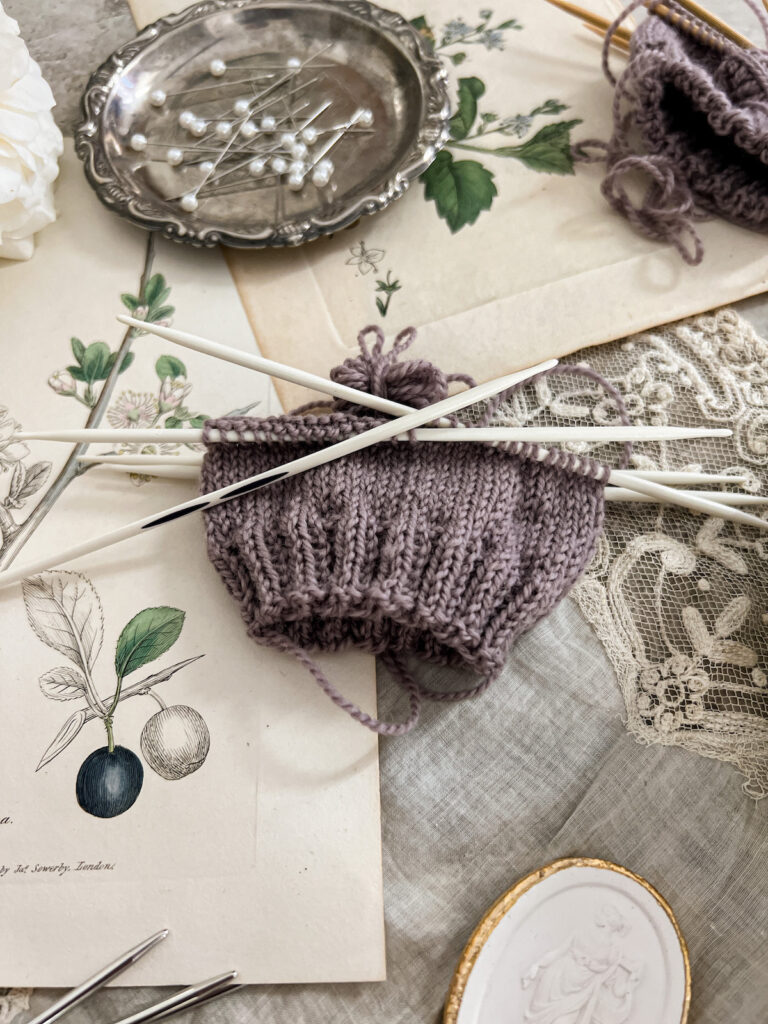
Most of these ergonomic double pointed needles work by introducing some ridges into the needle. They usually come in either triangle-shaped or cube-shaped styles. The idea here is that part of what causes hand pain in knitters is a too-tight grip on the needles. The ridges of these needles will help prevent knitters from holding their needles too tightly.
It makes a sort of intuitive sense. Often times, when we’re trying to train ourselves out of an unconscious behavior, we’ll introduce a friction point or something to make that unconscious behavior unpleasant.
Nail biters, for example, will often add a bittering agent to their fingertips to stop themselves from biting. They also sometimes get a manicure so the fresh polish will catch their eye and remind them not to nibble.
So here, the same theory applies. Gripping the needles too tightly will be immediately uncomfortable, causing the knitter to loosen their grip.
The other reason knitters often experience hand pain is that the needles and their knitting are heavy, even when working on small projects. I notice a marked difference between my metal DPNs and a set of bamboo DPNs. Over time, that added weight can put strain on hands and wrists. Ergonomic needles, therefore, tend to be made of lightweight materials like plastic or carbon fiber.
I don’t experience hand pain while knitting, but I was curious about how these needles felt to work with. Thankfully, the folks at Prym gave me a set of their ergonomic DPNs (affiliate link) last year when we were at H+H Americas. I cast on and knit up a swatch, and I found myself pleasantly surprised.
For me, the ridges were definitely kind of annoying, but they didn’t distort my stitches or cause me to have unevenness in gauge. That was my biggest worry. While I wouldn’t use them for my regular knitting work because the drawback of those ridges is greater than any benefit I’d get from using them, I’ll definitely keep them on hand in case I do start experiencing hand pain. It’s probably only a matter of time, given how tightly I knit.
One important note: the Prym needles are plastic needles. While this makes them both lightweight and flexible, it also makes them more grippy than metal needles would be. Because having to repeatedly shove yarn along stickier needles can also cause hand and arm pain, this is something to be on the lookout for. If you’re looking for needles that glide more easily, try one of the metal options linked below.
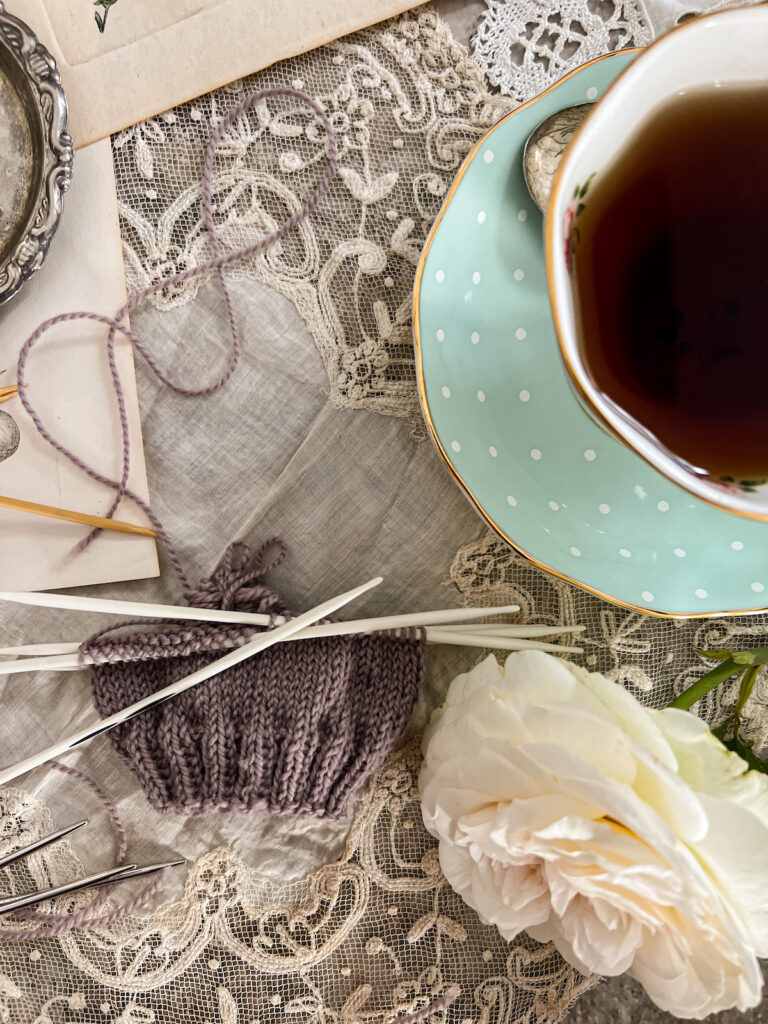
Characteristics to Look For in a Double Pointed Needle Set
If you’re a knitter who experiences hand pain, here’s a quick cheat sheet for what to look for in a set of double-pointed needles, along with some links to needles other knitters with hand pain have recommended to me over the years.
Look for:
- Needles that are lightweight, so they don’t add extra stress to your hands and wrists
- Needles that have a shape with sharp ridges, so you won’t grip too tightly
Try:
- Prym Ergonomics (affiliate link)
- Knitter’s Pride Cubics
- KnitPicks Foursquare Needles (affiliate link)
Best Double Pointed Needles for Knitters Who Hate Double Pointed Needles
So what do you do if you hate double pointed needles but can’t use tiny circular needles and don’t like the magic loop method? Well, here are a couple options.
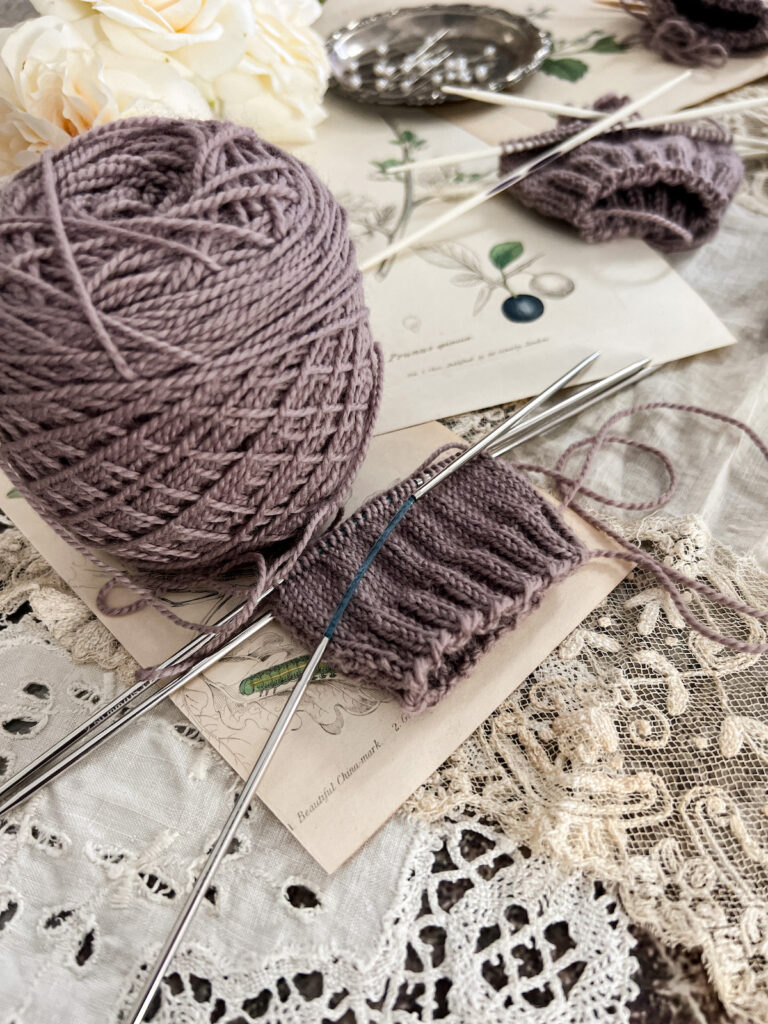
Option 1: Non-Rigid or Non-Straight DPNs
First, you can try specialized shorter needles with bendy middles, like the Addi FlexiFlips. Unlike regular DPNs, the FlexiFlips have a very short cord between the two needle tips. This allows you to work in the round using just three needles instead of four or five.
Ordinarily, the rigid center portion of traditional DPNs makes it so that you need to use several needles. The bendy middles of the FlexiFlips mean you can have each side of the tube flat, a lot like how your stitches look when using the magic loop method.
I bought my set of FlexiFlips a couple years ago. While I usually prefer knitting socks on a 9″ circular needle, I think the FlexiFlips are a great alternative for people who don’t like the tiny circ. They take a little getting used to, but once you do, you might find that this needle type solves your DPN woes.
There are also some interesting developments in the shape of DPNs. For centuries, they’ve been straight needles, but I tried a set of bent DPNs earlier this summer. It was a really interesting experience. They work much like the FlexiFlips, but unlike the FlexiFlips, they’re rigid. This is a great choice for knitters who don’t like DPNs, but find the flexibility of FlexiFlips kind of uncomfortable.
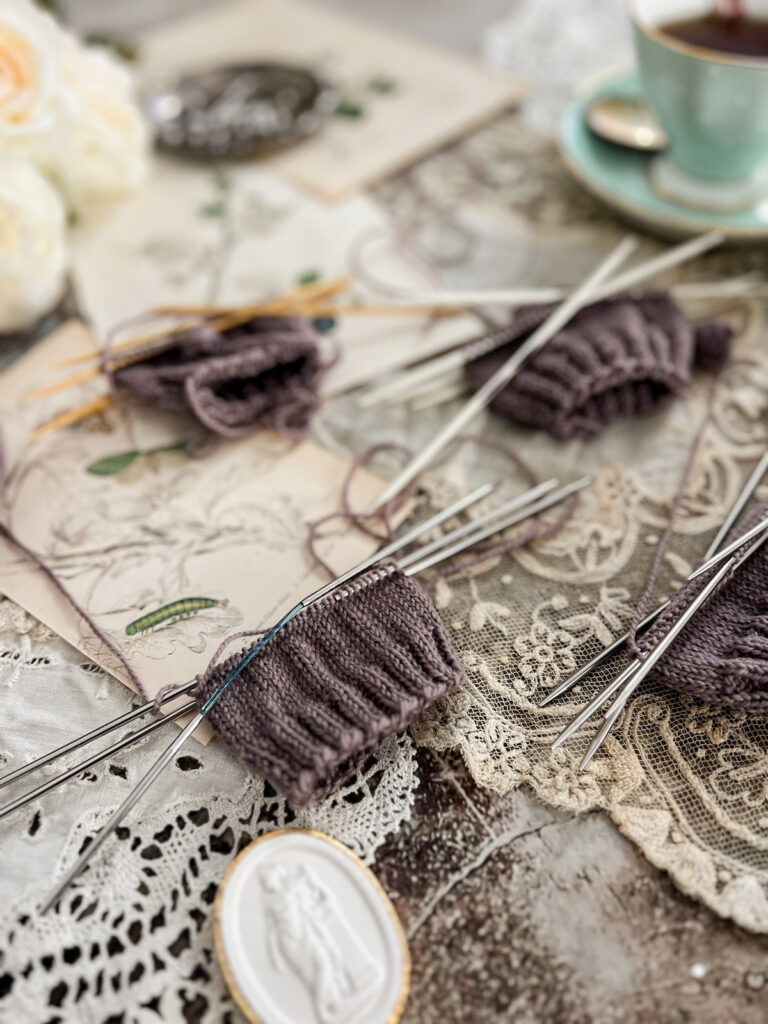
Option 2: Two Short Circs
The other option you can try is knitting with two short circular needles. There are a lot of sock knitters who love to work with two 16″ (41 cm) circular knitting needles, and that works well for them.
While I haven’t yet tried this method myself, because I like the methods I currently use, it’s on my list of techniques to experiment with. I think, however, I would find the extra movement in the longer needles irritating. If certain repeated sensory stimuli tend to annoy you, that might be something to consider.
Characteristics to Look For in a Double Pointed Needle Set
Let’s not beat about the bush. If you hate DPNs, you’re probably not looking for a set of DPNs! So if you’re a knitter who hates DPNs, here are some some links to needles that might work for you instead.
Try:
- Addi FlexiFlips (affiliate link)
- HiyaHiya Flyers (affiliate link)
- Neko Curved DPNs (These are the bent DPNs I tried at H+H Americas this year, and after a bit of fiddling, I thought they were pretty cool)
But Wait: Why Trust My Opinions?
I’ve been knitting since 2007, and I’ve been a sock knitter since 2008. I knit my very first pair of socks using double point knitting needles and used them for years after.
In the intervening years I’ve experimented with dozens of different yarns and needles, and now that I often knit a few hours each day as a knitting pattern designer, I’ve become quite picky about my materials.

I’ve knit with everything from eBay bargain needles to specially coated Addis, using both rough and smooth yarns. I’ve tried several varieties of wooden needles, a few different metals, plastic needles, and more.
Over the years, I’ve also talked with lots of other devoted sock knitters who have (very!) strong opinions about their preferred tools. DPNs are a common choice for sock knitting needles, so sock knitters are a great source of information about them.
While I haven’t tried every single needle available in the world, I’ve tried quite a few of them. It’s been a long journey, and there’s no sense in hoarding all this hard-earned knowledge to myself.
I’m always curious to hear from other knitters about their favorite tools, and I’m sure I’ve left out a lot of much-loved double pointed knitting needles here.
If you have a needle set that you love and don’t see listed here, please drop a note in the comments! One of the best things about blog posts is that they live in the same place forever, so information shared in the comments won’t get lost the way it would on a social media post.
And of course, if you’d like to try DPNs but are a little intimidated or find them fiddly, don’t worry. My friend Teresa has written a great blog post full of tips for using DPNs that should help you get more comfortable quickly.
Let’s stay connected!
Join my newsletter for 30% off all new releases, regular updates with helpful tips and tricks, first crack at registration for upcoming workshops, exclusive discounts, and more.
Prefer to read without ads? Join my Patreon, which starts at just $1 a month!
Join the A Bee In The Bonnet Facebook Group to participate in knitalongs and other fun community events
Come hang out with me on the A Bee In The Bonnet TikTok
Follow along on the A Bee In The Bonnet Instagram
Get inspired via the A Bee In The Bonnet Pinterest

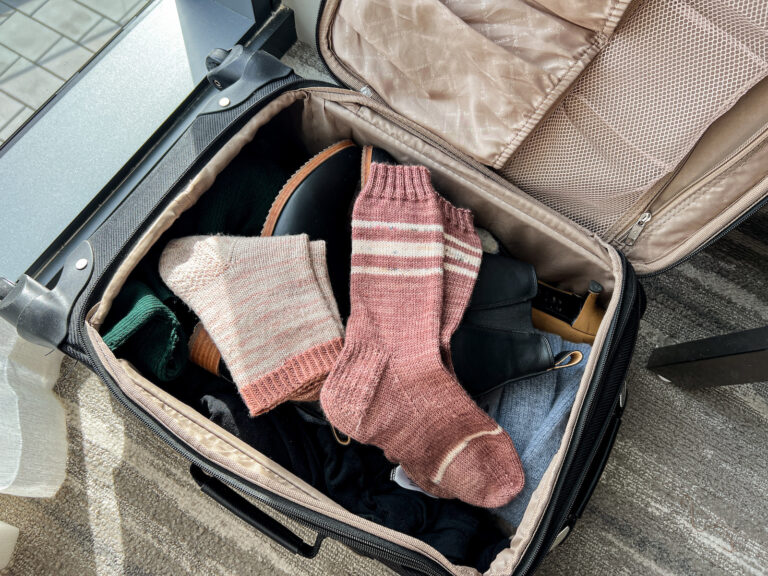

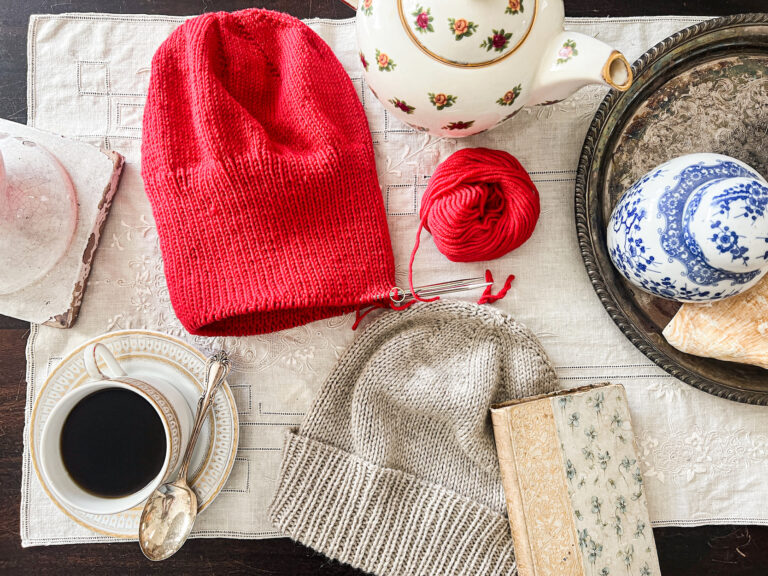
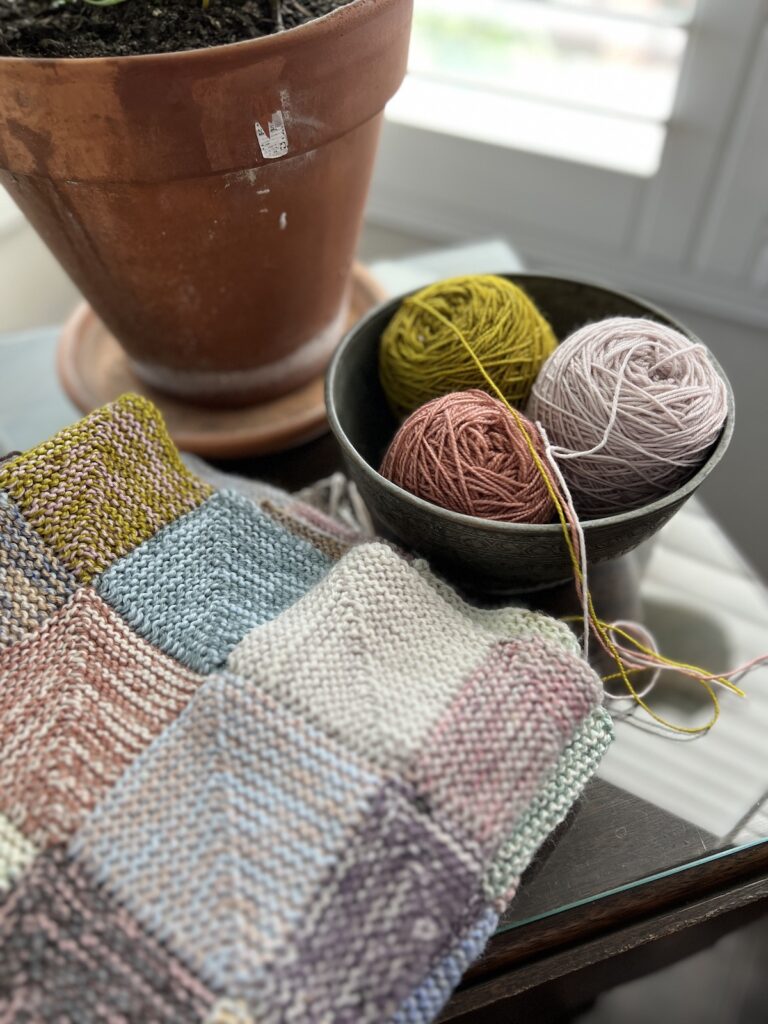
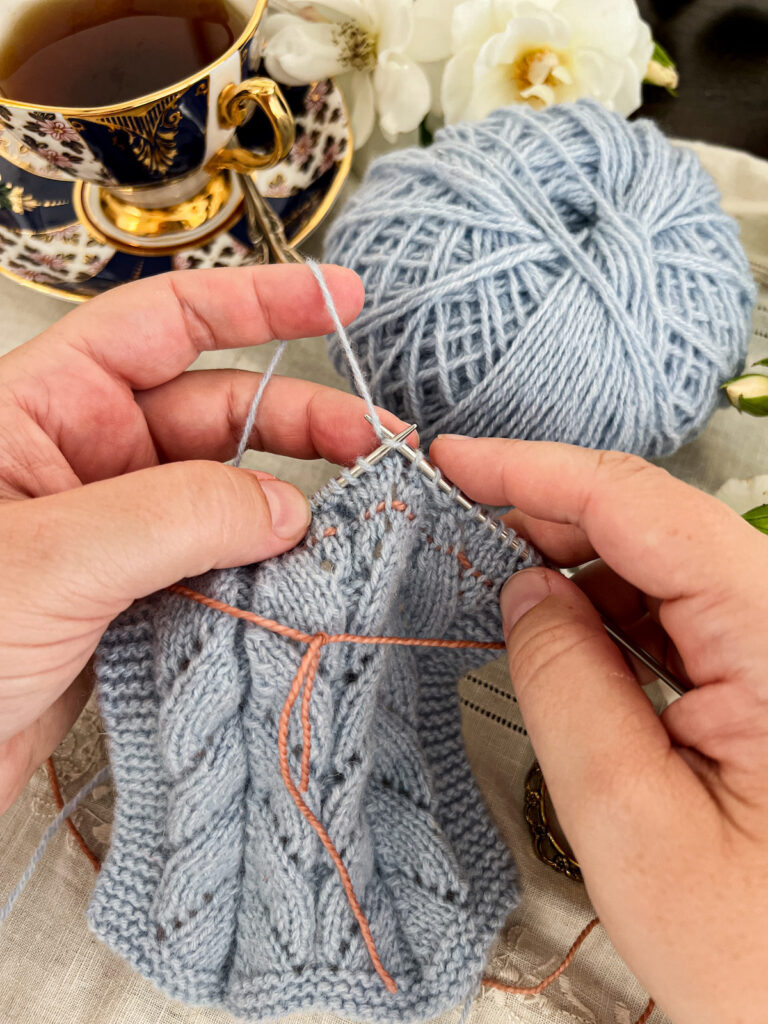
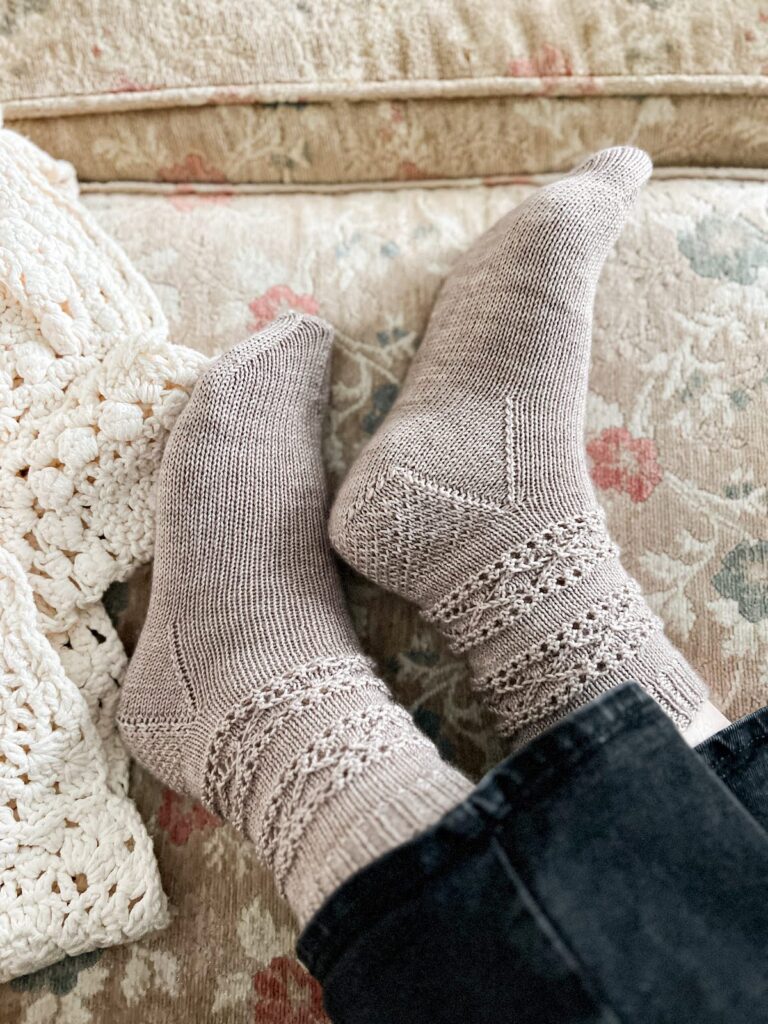
I purchased a set of Knitter’s Pride DPNs years ago. What a great decision that turned out to be. The wood is soothing to my fingers and the yarn moves easily over the surface. Fabulous!
I’ve heard such good things about them! And it feels so nice when you find just the right needles, doesn’t it?
I’ve been knitting since I was 5 or 6, I’m 73 this year. Several years ago I discovered Knitpicks Symphonie and fell in love with them, so I bought a set of their dpns and love them too. My hands don’t ache anything like they used to.
I love hearing that! Aching hands are no fun, and if you’ve found needles that help fix that problem, you’ve found the perfect set.
I absolutely love my Karbonz; they are my favorite needles of all time. I am a tight knitter and the Karbonz seem unbreakable, even the 1.75mm.
They are weapons-grade sharp. I had to give up sock knitting for hats on circulars when my young puppy started making wild leaps into my lap. She’s calmer now, and I’m back to socks.
I find them just sticky enough to stay in the sock.
I can imagine an energetic puppy wouldn’t mix well with super sharp needles! So glad you’re both in a place where the sock knitting can resume.
I love my Flexi-Flips. They just hit that sweet spot for me where they’re not as annoying as rigid DPNs but more comfortable than short circs (I haven’t tried 9” circs, but I’ve used 12” for sleeves and there’s almost not enough needle for me to hold onto so I find myself gripping more tightly – and I’m already a tight knitter). I have two pairs of Flexi-Flips in the same size so I can work two socks concurrently and avoid second sock syndrome. They’re pricy though, so for other sizes of needle I gravitate towards ChiaoGoo stainless steel or Knitters Pride Zing.
The needle tips on the 9″ circs are definitely teeny tiny, but I’ve found that actually helps me ease up on being such a tight knitter because I have less surface area to trap in my death grip 😂
Have you tried the lndian Lake Artisans hexagonal dpns? Very comfortable.
I haven’t! This is the first I’m hearing about them. I’ll have to add them to the list to try.
Have you used casein needles? They are slicker than wood, but easier for me than metal because they warm slightly with use. They are also a beautiful tortoise-shelly thing to look at. I have been knitting since sometime in the early 70s. I knit loosely, but have some hand pain because I knit a lot! I wish I could remember where the casein needles came from. They are almost indestructible!
These are new to me! I’ll have to see if I can hunt down a pair. They sound lovely.
@Lauren Rad, they are! I LOST them for awhile and found them again just in time for making Christmas socks.